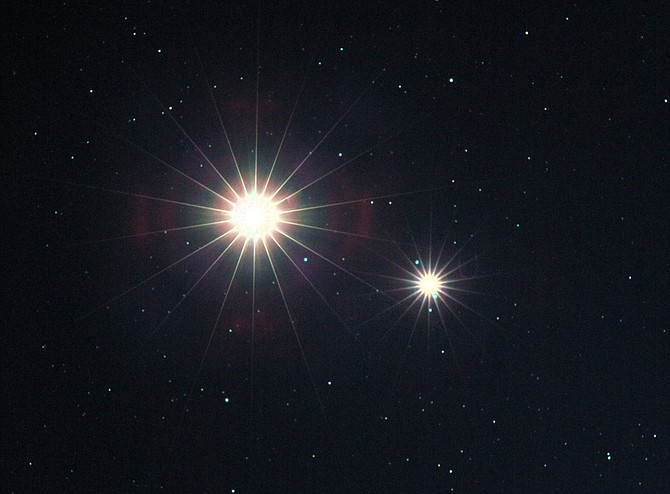
CMC astronomy and physics professor Jimmy Westlake’s “Celestial News” column appears weekly in the Steamboat Today newspaper.
Anytime the night sky’s two brightest planets pass close to each other, it is a spectacular event worth watching. Venus, our dazzling “Evening Star,” has been flirting with Jupiter, the king of the planets, for several weeks now. The two bright planets have been dominating our colorful western sky at dusk and are inching closer and closer together for an eye-popping close conjunction at the end of this month.
Venus turns out to be a hellish planet, with sulfuric acid clouds, crushing pressures and a temperature near 900 degrees Fahrenheit. Imagine an acid-filled pressure cooker, and that’s a close approximation of what you could expect when standing on Venus’s surface. Her yellowish-white clouds reflect the sunlight so well that Venus is the brightest object in Earth’s sky, except for the sun and moon.
Jupiter finishes a close second, in terms of brightness. Larger than all of the other planets and moons combined, Jupiter reflects sunlight very well from its cloud tops, too, but from a much greater distance, so it doesn’t shine as brightly as Venus. Jupiter is a planet made of liquid hydrogen, with a few colorful clouds on top. It has no solid surface to stand on.
On the evening of Tuesday, June 30, starting about an hour after sunset, Venus and Jupiter will appear to pass so close to each other, about 1/3 of a degree, that you will be able to hide both planets behind the tip of your pinky finger held out at arm’s length. They won’t look it, but these two worlds actually will be millions of miles apart, Venus being the closer planet to us at only one-half of an astronomical unit away.
Jupiter will be about six astronomical units away from us and just happens to be seen along the same line of sight as Venus. One astronomical unit is the average distance of the Earth from the sun, about 93 million miles, and is the unit used by astronomers to size up distances in the solar system.
This amazing conjunction is so close that both planets will fit into the medium-power eyepiece view of a telescope at the same time. Venus will be a dazzling crescent, like a tiny half moon, and Jupiter will appear as a full disk, sporting its two dark equatorial cloud stripes.
As a bonus, all four of Jupiter’s giant moons will be in view, too. Europa, Io and Callisto will form a line on the west side of Jupiter, and lone Ganymede will appear on Jupiter’s east side. If you own a small telescope, you won’t want to miss this rare chance to view two planets and four moons at once.
Watch the two planets converge night by night during the last two weeks of June and then watch them separate night by night the first week of July. It’s orbital motion and celestial mechanics at work.
Professor Jimmy Westlake teaches astronomy and physics at Colorado Mountain College’s Alpine Campus. His “Celestial News” column appears weekly in the Steamboat Today newspaper and his “Cosmic Moment” radio spots can be heard on local radio station KFMU. Check out Jimmy’s astrophotography website at www.jwestlake.com.
